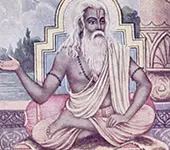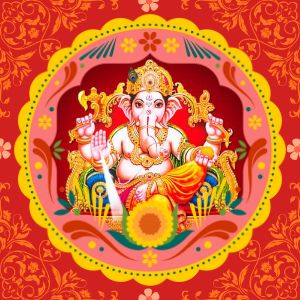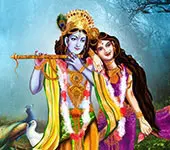This audio tells you about - 1. Why there are 12 skandhas in Bhagavata 2. How the Lord occupies your whole body after you listen to Bhagavata 3. How the authority of Bhagavata is equal to that of Veda 4. The symbolism in Krishna being seen more with women.
Who are the Saptarishis?
The Saptarishis are seven prominent rishis. The members of this group change every manvantara. According to Vedic astronomy, the members of Saptarishi-mandala or constellation, the Big Dipper are - Angiras, Atri, Kratu, Pulaha, Pulastya, Marichi, and Vasishta.
Who was the first among the Rishis?
Varuna performed a yaga towards the end of Chakshusha manvantra that caused the seven rishis to be born on earth. Bhrigu was the first to emerge from the homa kunda.
Quiz
Who gave Syamantaka Mani to Satrajit ?Transcript
(Click here to read more)
We saw that Srimad Bhagavata is an avatara itself of Sri Hari, in book form. Like how he took avatara as Matsya, Kurma, Varaha, he also took avatara in a book form, scripture form as Bhagavata. Shastra says Purusha is made of 12 organs- द्वादशो वै पुरुषः। The Lord is Purusha, Purushottama. Two legs, two thighs, one torso (the middle portion), two sides of the chest, two upper arms, two lower arms, and one head. This is the reason Bhagavata is also divided into 12 skandhas. ....
Transcript
(Click here)
We saw that Srimad Bhagavata is an avatara itself of Sri Hari, in book form.
Like how he took avatara as Matsya, Kurma, Varaha, he also took avatara in a book form, scripture form as Bhagavata.
Shastra says Purusha is made of 12 organs- द्वादशो वै पुरुषः।
The Lord is Purusha, Purushottama.
Two legs, two thighs, one torso (the middle portion), two sides of the chest, two upper arms, two lower arms, and one head.
This is the reason Bhagavata is also divided into 12 skandhas.
Not deliberately done like that.
If the Lord takes avatara as a book, then it has to represent him as Purna-
Purusha, as having the twelve organs of Purusha.
That is why Bhagavata came out of Sage Vyasa in 12 skandhas.
See, these are not accidental or coincidental.
This is the beauty and greatness of our scriptures.
Because they represent the ultimate truth and only truth.
So if a book has to represent Sri Hari in his entirety, as Paripurna-tama, Paripurna-Purusha, Purushottama then it should have 12 sections as well.
Otherwise, how will you call it his avatara?
There are several techniques of sadhana, meditation.
You meditate upon him on a lotus which is at the center of your chest.
When your meditation becomes perfect, successful, then his chaitanya would spread all over your body.
You can actually feel that your body is replaced by his body.
It is like he has expanded from the middle of your chest to all over your body.
This is an anubhuti that you get.
When you start getting such anubhutis, you can be sure that you are progressing in your sadhana.
Listening to Bhagavata works in a different way.
When you listen to Bhagavata, we have earlier seen that Bhagavan enters your body through your ears and occupies the lotus at the middle of your chest.
But if you listen to all the 12 skandhas, you would feel his presence in all the 12 organs of your body.
He would have filled your body by then.
The authority of Bhagavata is equal to that of Veda.
It is said that if you have a doubt in the Veda, look in Gita.
If you have a doubt in Gita, look in Brahma Sutra.
If you have a doubt in Brahma Sutra, look in Bhagavata.
Bhagavata broadly has got three kinds of divisions.
They can be identified from the nature of the language used and the context.
They are called Samadhi-bhasha, Paramata-bhasha, and Laukikee-bhasha.
Poets like Kalidasa, whatever they write out of their imagination is called Laukikee-bhasha.
It doesn’t have the pramanatva of Veda.
This is the difference between Veda-pramana and Laukika-pramana.
In any debate of reckoning, if you quote from the Veda, then the debate ends there, nobody will challenge you anymore.
If you quote from a kavya, nobody would even listen to you.
Such Laukikee-bhasha is also there in Bhagavata, like description of nature.
Then there is Paramata (quotes), what others have said, opined.
They will be specified: this is what he said, this is his opinion.
This is also not authoritative, if you are quoting such a thing either Laukika or Paramata, it will not be accepted as supreme truth.
It is somebody’s opinion like quote-unquote.
This is not pramana.
Samadhi-bhasha, whatever Vyasa realized as supreme truth, in his state of samadhi, samprajnata samadhi, this, he wrote down.
This is the Samadhi-bhasha of Bhagavata.
Only this part is authoritative, like Veda.
Majority part is Samadhi-bhasha.
Laukika and Paratama are just here and there as support.
But why are they even there?
To support, to make it more readable, more palatable.
Because Bhagavata is meant for ordinary people, not Veda-vidwans, not Shastra-vidwans.
Here also if you see in Krishnavatara, you will see that the Lord is more with women, working towards their emancipation, uddhara.
The gopikas, a whole lot of them.
When you think about Sri Krishna, you associate him more with gopikas and women.
Why is this so?
There is a symbolism here.
For this, we have to understand the difference between Purusha and Stree.
You know this, this nature around us, the prakriti is feminine in nature.
The nature is Devi as compared to Purusha.
The Lord is Purusha, Purna-Purusha, Purushottama.
We say purusharthas, the four purusharthas (Dharma, artha, kama, and moksha).
When someone who has taken birth on earth has achieved all these four purposes of having taken birth, all four, then he becomes Purusha.
So Purusha-Stree is not male-female, it is something else.
Purusha is the state that you are in after achieving moksha.
If someone is engrossed in nature,
what he or she sees around him or her,
wondering how to interact with it,
how to take from it,
how to give to it,
how to defend oneself from it,
how to defend what is around you- like your property,
this nature includes your own body,
if your thoughts are around your body,
its well being,
its status,
its reputation,
how it is appreciated,
how it can be kept comfortable,
how to make it give pleasure to you,
how to protect it from external attack,
then what is around you,
how to build your house,
how to protect it,
how to make sure that your stuff is not stolen,
if these are the thoughts and actions that are keeping your mind occupied,
then you are a Stree,
doesn’t matter whether you are in the body of a male.
Please be clear that this does not mean that Stree is inferior.
It is just a plain description of the nature of each one- Purusha and Stree.
Lord Krishna is more interested in women, Stree as per this description:
तेषामुद्धारकः कृष्णः स्त्रीणामत्र विशेषतः।
He is interested in the emancipation of Stree, who are more immersed in the world, irrespective of whether they are in a male body or female body.
This is the symbolism of you finding Lord Krishna more with women than men.
Recommended for you
The real reason behind observing brahmacharya.
 Click here to know more..
Click here to know more..
Lord Rama starts talking explaining the reason behind his present state
 Click here to know more..
Click here to know more..
Pancha Sloki Ganesha Puranam

shreevighneshapuraanasaaramuditam vyaasaaya dhaatraa puraa tatkhand'am prathamam mahaaganapateshchopaasanaakhyam yathaa. samhartum tripuram shivena ga....
Click here to know more..
English Topics
Bhagavatam
Click on any topic to open
- 65 Bhagavan's External Deeds
- 64 Is the Body Yours?
- 63 What's So Great About The Stories Of Sri Krishna
- 62 What To Do If You Just Don't Have Interest In Bhagawan
- 61 Which God Should I Worship?
- 60 How To Observe Dharma Properly
- 59 Devotee's progress
- 58 Which Guruji Can You Trust
- 57 Bhagawan Is Beyond Human Comprehension
- 56 The Missing Piece: Why Your Spiritual Practices Are Not Working
Please wait while the audio list loads..
30
Ganapathy
Shiva
Hanuman
Devi
Vishnu Sahasranama
Mahabharatam
Practical Wisdom
Yoga Vasishta
Vedas
Rituals
Rare Topics
Devi Mahatmyam
Glory of Venkatesha
Shani Mahatmya
Story of Sri Yantra
Rudram Explained
Atharva Sheersha
Sri Suktam
Kathopanishad
Ramayana
Mystique
Mantra Shastra
Bharat Matha
Bhagavatam
Astrology
Temples
Spiritual books
Purana Stories
Festivals
Sages and Saints
